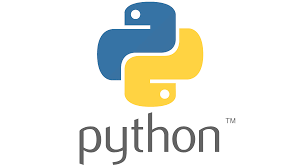
What is a Lock Object?
In Python, a threading.Lock object is used to synchronize the execution of threads. It can protect critical sections of code that should not be executed concurrently. When a thread acquires a lock, it blocks other threads from entering the critical section until it is released.
Syntax for creating a Lock object:
import threading
threading.Lock()A primitive lock can be in either “locked” or “unlocked” mode. It is made in an unlocked state. It has two fundamental methods: acquire() and release(). When the state is unlocked, acquire() changes it to locked and immediately returns. When the state is locked, acquire() blocks until another thread’s release() call changes it to unlocked, at which point the acquire() call resets it to locked and returns. The release() method should only be called in the locked state; it changes the state to unlocked and returns immediately. A RuntimeError will be thrown if an unlocked lock is attempted to be released.
acquire():
lock.acquire() is a method of the threading.Lock class in Python that is used to acquire the lock. When a thread calls lock.acquire(), it blocks other threads from entering the critical section of code protected by the lock until it is released.
Here is an example of how to use lock.acquire():
import threading
# Create a lock object
lock = threading.Lock()
# Acquire the lock
lock.acquire()
# Critical section of code goes here
# Release the lock
lock.release()Keep in mind that if the lock is already acquired by another thread, the calling thread will be blocked until the lock is released. You can use the blocking parameter to specify whether the thread should block or not:
import threading
# Create a lock object
lock = threading.Lock()
# Try to acquire the lock without blocking
if lock.acquire(blocking=False):
# Critical section of code goes here
lock.release()
else:
# The lock was already acquired, so do something else
pass
release():
release() is a method of the threading.Lock class in Python that is used to release the lock. When a thread calls release(), it allows other threads to enter the critical section of code protected by the lock. Refer to the above-given example.
eep in mind that you should only call release() on a lock that has been acquired by the calling thread. If the lock is not currently acquired, a RuntimeError will be raised.
Example:
import threading
# Create a lock object
lock = threading.Lock()
def func():
# Acquire the lock
lock.acquire()
# Critical section of code goes here
# Release the lock
lock.release()
# Create two threads
t1 = threading.Thread(target=func)
t2 = threading.Thread(target=func)
# Start the threads
t1.start()
t2.start()
# Wait for the threads to finish
t1.join()
t2.join()
In this example, the func function acquires the lock at the beginning of the function and releases it at the end. This ensures that only one thread can execute the critical section of code at a time.
Keep in mind that locks are useful for synchronizing threads, but they should be used with caution. If you acquire a lock and then perform a long-running operation, other threads will be blocked and unable to execute their critical sections of code until the lock is released. This can lead to performance issues and is generally considered a poor design. It is usually better to use other synchronization primitives, such as threading.Event or threading.Semaphore, to achieve the desired behavior.
Note: also read about Thread class and its Object
Follow Me
Please follow me to read my latest post on programming and technology if you like my post.
https://www.instagram.com/coderz.py/
https://www.facebook.com/coderz.py
Staying up to the mark is what defines me. Hi all! I’m Rabecca Fatima a keen learner, great enthusiast, ready to take new challenges as stepping stones towards flying colors.
Leave a Comment
You must be logged in to post a comment.